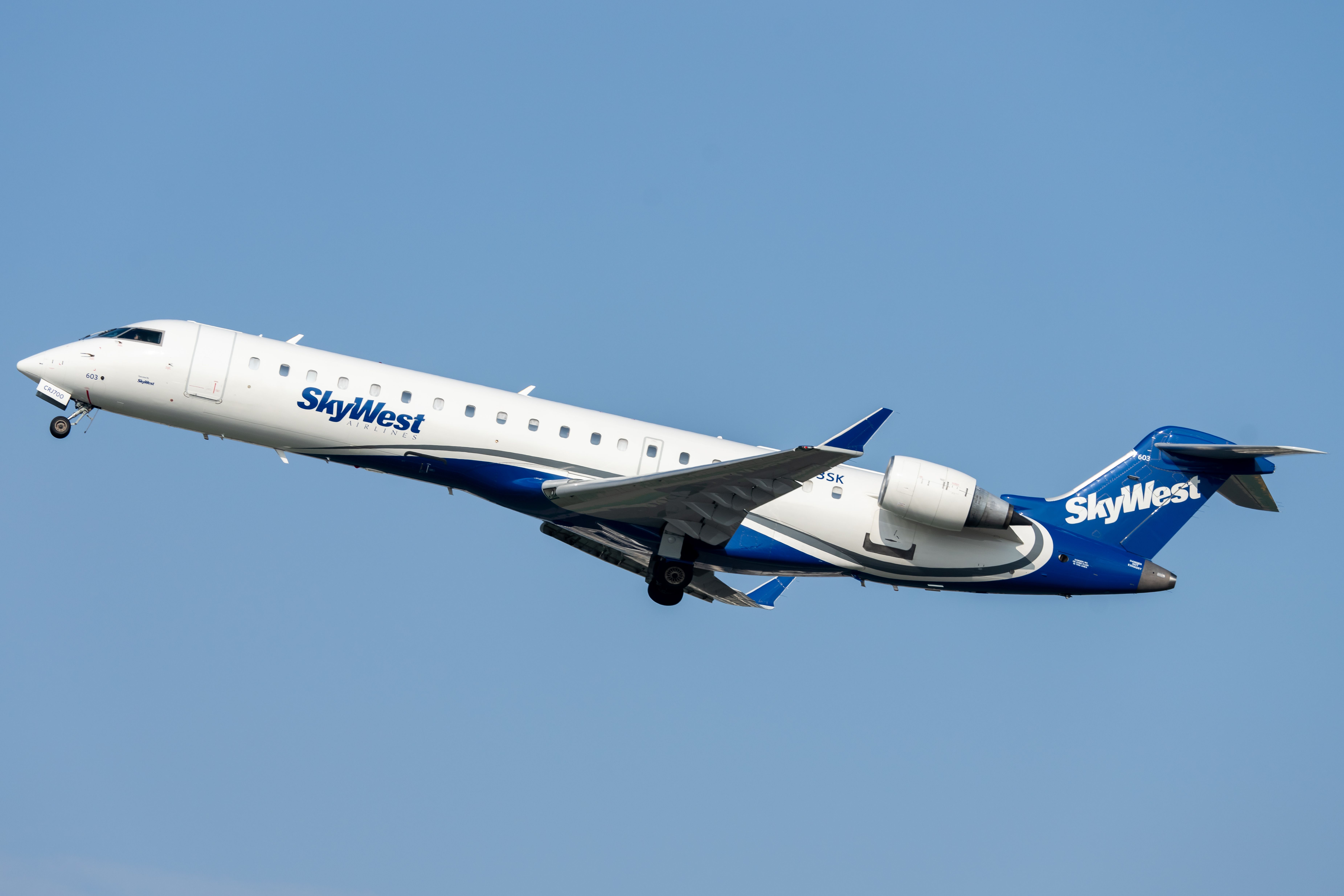Regional carrier SkyWest is facing a shortage of pilots. As a result, it is looking at reducing frequencies and service as it manages staffing and allocates its pilots on more higher-yield routes and operations. SkyWest has already indicated it expects to fly fewer block hours in 2022 than 2021, but it went further and has also filed with the US Department of Transportation (DOT) to cut frequencies on some Essential Air Service (EAS) routes.
SkyWest seeks EAS reductions
SkyWest participates in the United States' Essential Air Service (EAS) program. Under this program, the DOT works with local communities to offer subsidies for air service to destinations that may otherwise not have enough demand to warrant flights from commercial airlines. Airlines offer proposals for service and, in a process that includes community stakeholders, the DOT selects an airline to provide flights and awards them a subsidy. However, this program does not allow airlines to exit markets or reduce frequencies unilaterally or without notice. As a result, SkyWest has alerted the DOT that it will be reducing the frequency of EAS service from twelve weekly round trips to ten weekly round trips for the following EAS communities:
- Alamosa, Colorado (ALS)
- Scottsbluff, Nebraska (BFF)
- Dodge City, Kansas (DDC)
- Fort Dodge, Iowa (FOD)
- Hays, Kansas (HYS)
- Laramie, Wyoming (LAR)
- North Platte, Nebraska (LBF)
- Liberal, Kansas (LBL)
- Pueblo, Colorado (PUB)
- Vernal, Utah (VEL)
- Cape Girardeau, Missouri (CGI)
- Decatur, Illinois (DEC)
- Mason City, Iowa (MCM)
- Muskegon, Michigan (MKG)
- Fort Leonard Wood, Missouri (TBN)
- International Falls, Minnesota (INL)
Separately, SkyWest will also reduce its frequency of EAS flights from 12 roundtrips per week to seven roundtrips per week in Ogdensburg (OGS) and Plattsburgh (PBG).
Stay informed: Sign up for our daily and weekly aviation news digests.
Broader reductions
SkyWest offered some guidance on its 2022 outlook when it provided its fourth-quarter results last week. Citing staffing challenges, the airline anticipated a reduction in its block hours in 2022 to be down around 10-15% compared to its 2021 block hours.
Robert Simmons, Chief Financial Officer at SkyWest, stated the following on the carrier's fourth-quarter earnings call:
"We expect block hour production in 2022 to be down 10 to 15% from 2021 production, related to the staffing imbalance as we focus on growing our ERJ fleet and pulling down some of our CRJ fleet. The staffing challenges related to COVID, mix, and attrition have extended our COVID transition for another year or two."
Fleet-wise, SkyWest is focused on its Embraer E175 aircraft. These higher-gauge regional jets are in high demand from major airlines, and SkyWest will be inducting nearly 50 E175s between 2022 and early 2023 for operations. At the same time, it will be managing its CRJ regional fleet, which includes the CRJ200, CRJ700, and CRJ900.
SkyWest is facing a shortage of pilots. As a result, it is devoting as many of its pilots as possible to support the flights of higher-gauge CRJ and E175 aircraft and reducing block hours on its CRJ200 aircraft. Broadly speaking, the higher-gauge aircraft provide some of the better financial returns.
SkyWest's model in the context of these cuts
SkyWest operates regional jets on behalf of major airlines. Its flights from these EAS cities getting cut touch hubs for major US airlines, which offer connecting services for travelers to and from those destinations. SkyWest traditionally follows the lead of the major carriers' network planners and scheduling decisions. However, there are some markets where the airline does flying on its own accord. This is pro-rate flying, and it impacts a relatively small percentage of the airline's operations.
Nevertheless, the reductions in these operations will mostly impact customers with connecting itineraries. SkyWest did indicate that it is mainly making these reductions due to staffing and the interest of preserving operational integrity and not out of a desire to exit markets.


.png)
.jpg)